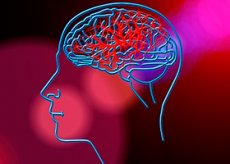New publications
Carbohydrates can help treat atherosclerosis
Last reviewed: 02.07.2025

All iLive content is medically reviewed or fact checked to ensure as much factual accuracy as possible.
We have strict sourcing guidelines and only link to reputable media sites, academic research institutions and, whenever possible, medically peer reviewed studies. Note that the numbers in parentheses ([1], [2], etc.) are clickable links to these studies.
If you feel that any of our content is inaccurate, out-of-date, or otherwise questionable, please select it and press Ctrl + Enter.

It turns out that some carbohydrates can prevent the formation of vascular plaques due to atherosclerosis, and also accelerate the resorption of existing deposits.
Everyone has long known that metabolic disorders can give impetus to the development of atherosclerosis. Characteristic deposits are formed inside the vascular tube, which over time transform into atherosclerotic plaques: their composition is particles of cholesterol, proteins, calcium, immunocytes, etc. To prevent the formation of plaques, doctors have always recommended adhering to a healthy diet - for example, sharply limiting the consumption of fatty foods and sweets, since sugar can provoke disorders of the pancreas and endocrine system, which, in turn, accelerates the development of atherosclerosis.
But, as it turned out, not all sugar is equally harmful. Scientists from the University of Bonn have discovered that a type of carbohydrate known as cyclodextrins can prevent the occurrence of atherosclerosis. Cyclodextrins are a product of the enzymatic processing of starches. If we consider this carbohydrate in chemical terms, it looks like a ring consisting of a molecular series of glucose familiar to us. Cyclodextrins are used everywhere: for the preparation of food, cosmetics, and even in biotechnology. These carbohydrates are part of antifungal agents and refreshing aerosols.
Experts say: "Systematic injection of cyclodextrin allows to almost halve the diameter of existing vascular plaques, and also prevents the formation of new deposits." The first experiments, as usual, were conducted on rodents. Some of the rodents had a hereditary predisposition to atherosclerosis, and the other part ate "unhealthy" food. As a result of the experiment, it turned out that cyclodextrin softened cholesterol crystals, reduced the severity of the inflammatory process and potentiated the transport of cholesterol from the bloodstream to liver tissue. Under the influence of this substance, a specific gene LXR was also activated, improving fat metabolism in the body.
Despite the obvious advantages of carbohydrates, scientists are in no hurry to introduce a new drug for the treatment of atherosclerosis. Cyclodextrins are included in the list of substances permitted for use in the pharmaceutical and food industries. However, a more thorough check of the carbohydrate is still necessary. In particular, it is necessary to calculate the probability of side effects during treatment, since previously conducted experiments indirectly indicated a negative effect of substances on hearing function. In addition, it is necessary to prove that cyclodextrins do not complicate the liver, as well as to calculate the exact dosages and features of the use of carbohydrate drugs.
It is possible that soon drugs with cyclodextrin will be actively used in the complex treatment of atherosclerotic disorders.
The information is published in Science Translational Medicine.

 [
[